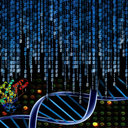In-silico analysis of heat shock protein 47 for identifying the novel therapeutic agents in the management of oral submucous fibrosis.
Słowa kluczowe
Abstrakcyjny
BACKGROUND
Heat shock proteins-47 (HSP47) is a collagen specific molecular chaperone, involved in the processing and/or secretion of procollagen. It seems to be regularly upregulated in various fibrotic or collagen disorders. Hence, this protein can be a potential target for the treatment of various fibrotic diseases including oral submucous fibrosis (OSF), which is a collagen metabolic disorder of oral cavity and whose etiopathogeneic mechanism and therapeutic protocols are still not well documented.
OBJECTIVE
The aim of this study is to identify the novel therapeutic agents using in-silico methods for the management of OSF.
OBJECTIVE
The objectives of this study are to identify the binding sites of HSP47 on the collagen molecule and to identify the lead compound with anti-HSP47 activity from the library of natural compounds, using in-silico methodology.
METHODS
The web-based and tool based in-silico analysis of the HSP47 and collagen molecules are used in this study. The crystal structure of collagen and HSP47 were retrieved from Protein Data Bank website. The binding site identification and the docking studies are done using Molegro Virtual Docker offline tool.
RESULTS
Out of the 104 Natural compounds, six ligands are found to possess best binding affinity to the binding amino acid residues. Silymarin binds with the 4AU2A receptor and the energy value are found to be -178.193 with four Hbonds. The other best five natural compounds are hesperidin, ginkgolides, withanolides, resveratrol, and gingerol. Our findings provide the basis for the in-vitro validation of the above specified compounds, which can possibly act as "lead" molecules in designing the drugs for OSF.
CONCLUSIONS
HSP47 can be a potential candidate to target, in order to control the production of abundance collagen in OSF. Hence, the binding sites of HSP47 with collagen are identified and some natural compounds with a potential to bind with these binding receptors are also recognized. These natural compounds might act as anti-HSP47 lead molecules in designing novel therapeutic agents for OSF, which are so far unavailable.


